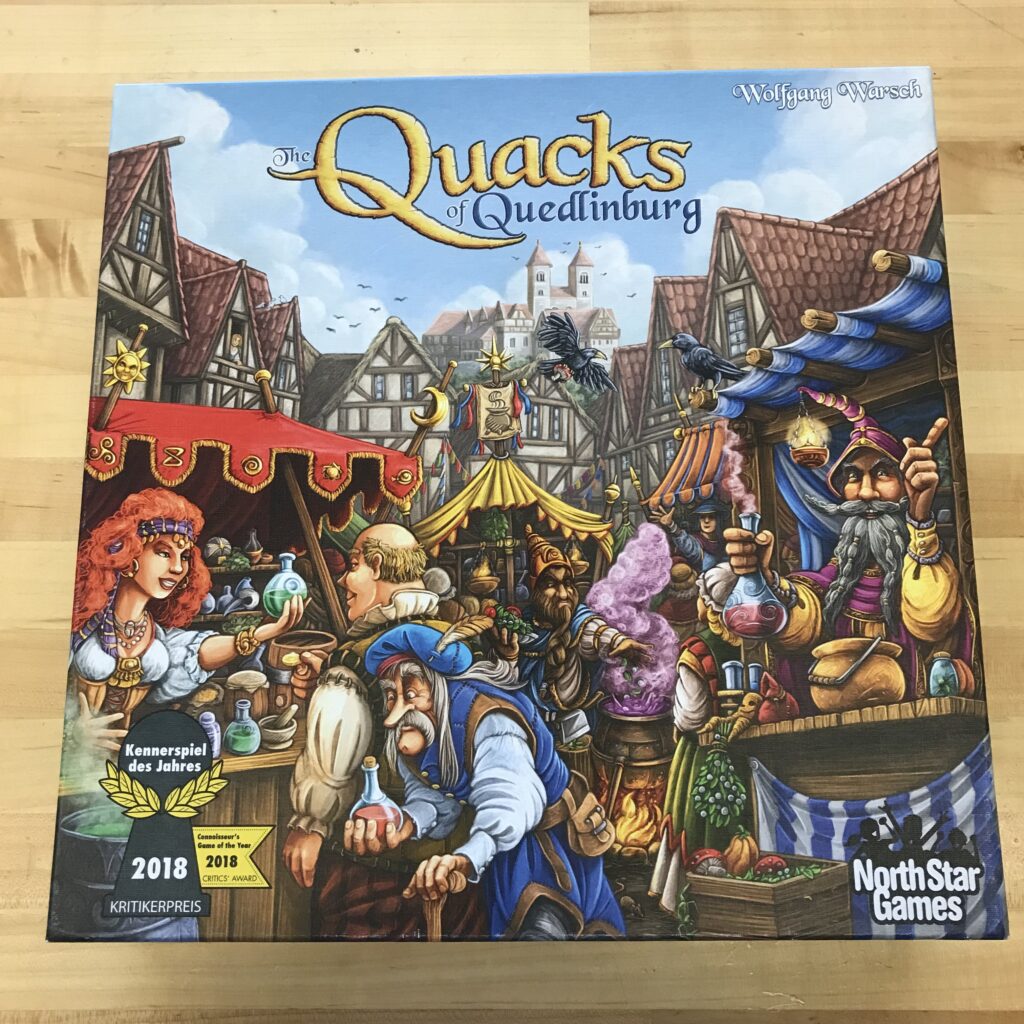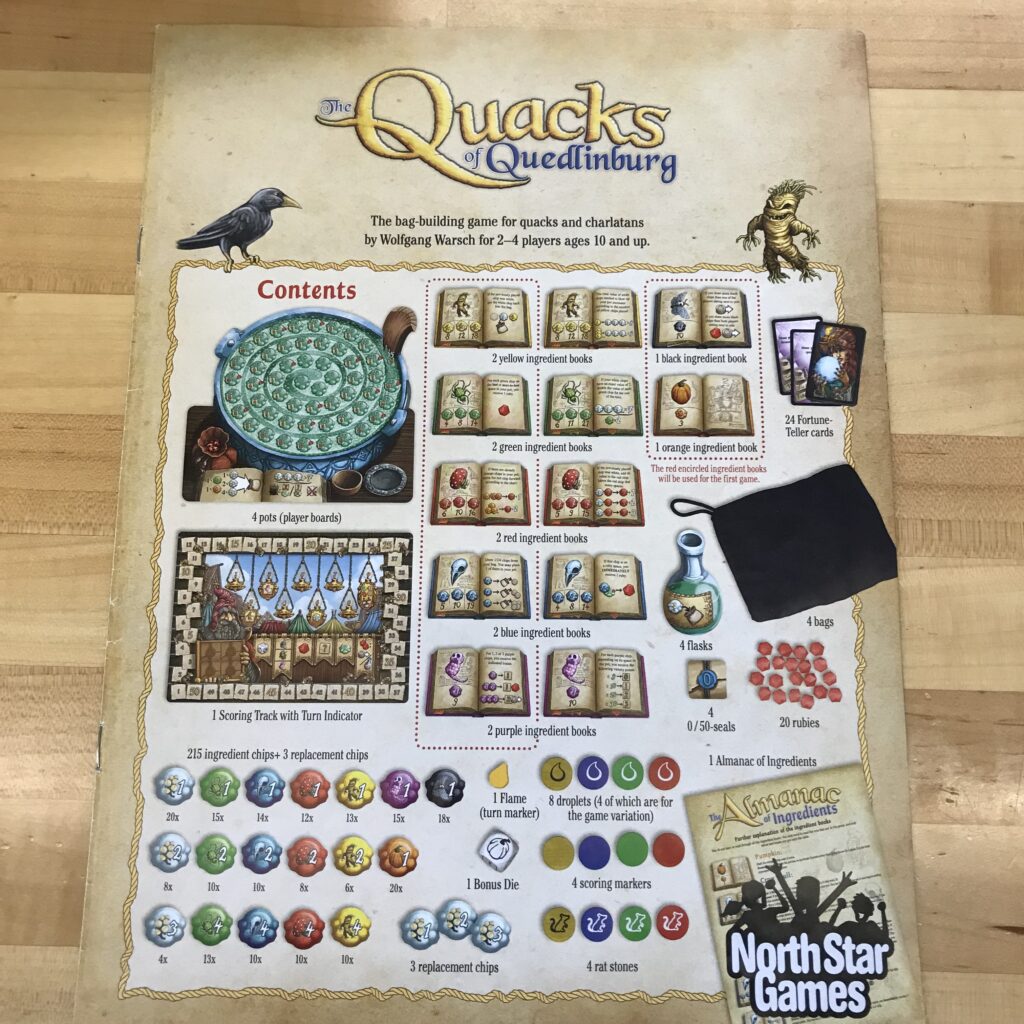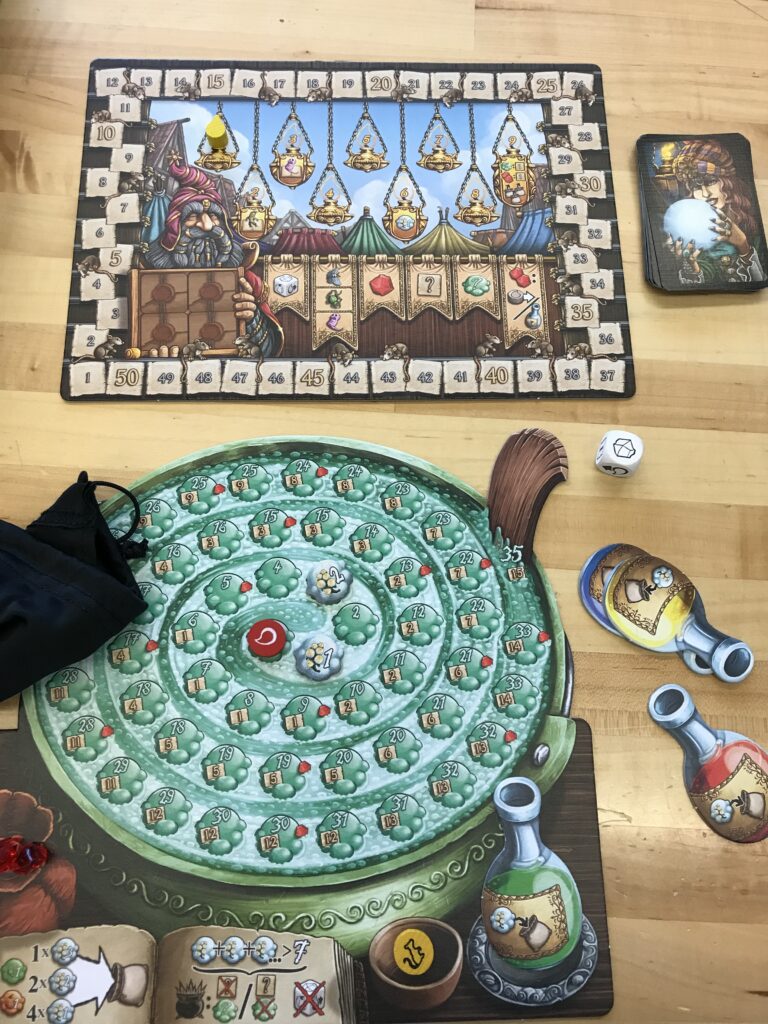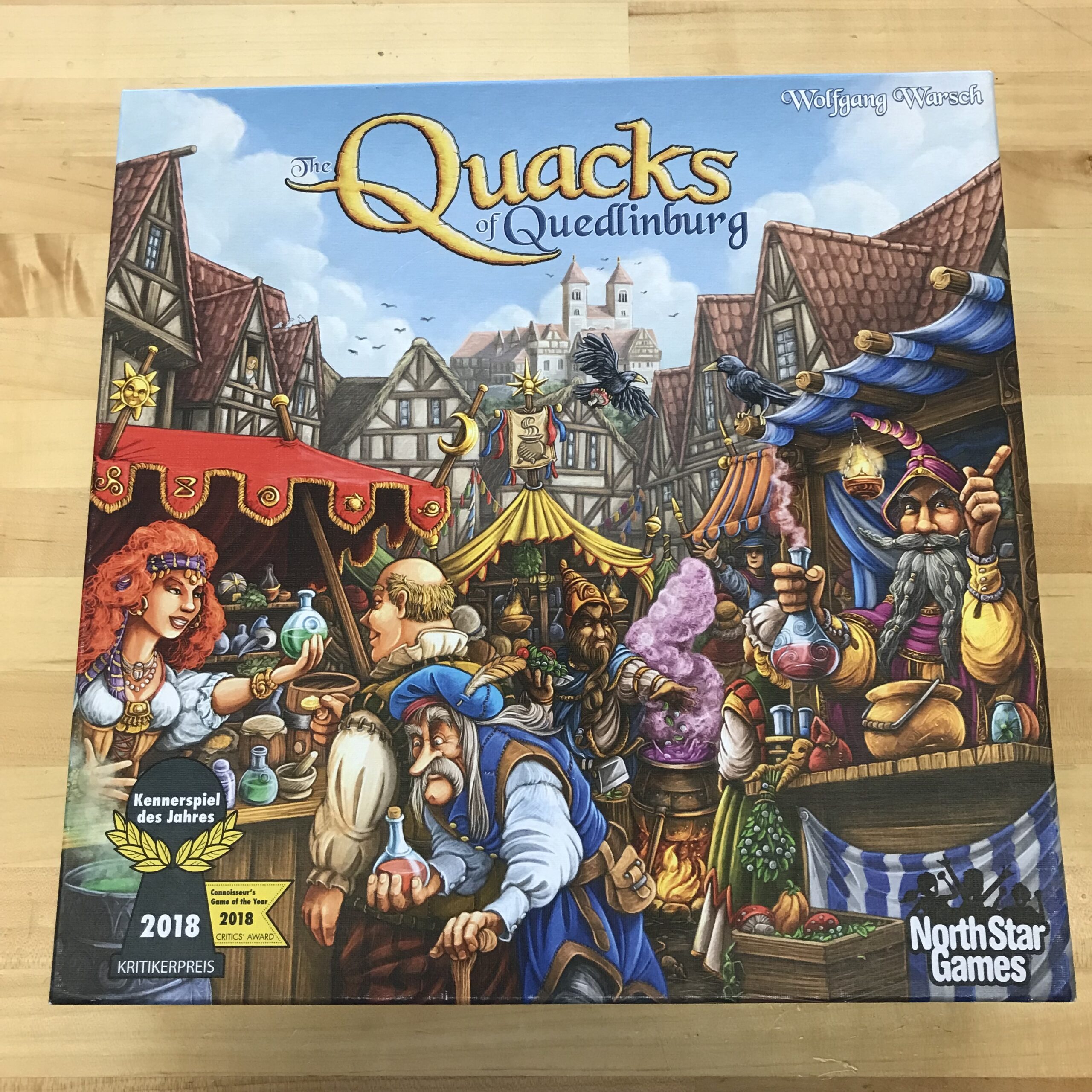I decided to play this board game for the first time because I was intrigued by its cover. We had two players and both of us were new to the game so read through the rules in detail.

The game is basically about cooking with special ingredients. The ingredients are randomly drawn from a black bag, and they are placed in the pot. The goal is to put as many ingredients on the pot without making it explode. The round ends when all of the players voluntarily stop drawing or the pot explodes. There are 9 rounds in total, and the points in each round add up to determine the winner.

I had three stages of emotional change during the play. First, in the first few rounds, I felt very confused about what to do next. I had to continuously flip through the rule book to figure out what to do with each of the components. Next, after I got used to the pattern of each round, I was more engaged in the game. I started thinking more deeply about how each of the ingredients influenced the outcome. In the last few rounds, I felt a bit tired because each round was quite long and repetitive. The overall experience of the game was not bad, but I think it did not match my expectations after reading such a long rule book.

There were certain parts of the game I thought could have been simplified to make the game more engaging to the ones who played it for the first time. There was a component called “mice,” which helped to close the gap between the winning player and the rest. However, as I only played the game with 2 players, I could not feel the importance of this component. Also, I think the component of mice just adds more unnecessary complexity to the game for people new to it. Also, the fortune teller cards gave me the same feeling that they make the game more complex. Thus, I think these two rules can be optional for players to add them later.
However, the game had many good parts. For instance, I enjoyed drawing out the ingredients randomly. Also, as different ingredients have different effects, distinguishing which one will be best added to the strategic aspect of the game. Additionally, I enjoyed playing around with the rubies. The rubies played an important role as they can move the starter marker forward — so you can get more points with fewer ingredients — or help to discard a white chip that would make the pot explode. I would push myself a little bit more to reach the ruby on the board. Nonetheless, this sometimes led to the explosion of the whole pot. The ruby was my incentive to push myself to the limit, creating more emotional engagement.
Overall, I think “The Quacks of Quedlinburg” is a well-made game. Its biggest downside for me was that the rule book could have been organized better to make the mechanics of the game clearer. (For instance, write a summary of what should happen in one round instead of writing them over multiple pages.) Nonetheless, for those who like magic and strategic games that require a bit of luck, the game would be quite interesting. You can feel the excitement of pulling out new chips and competing with your friends. Thus, I recommend the game if you are looking for a fun experience when you have leisure time.
